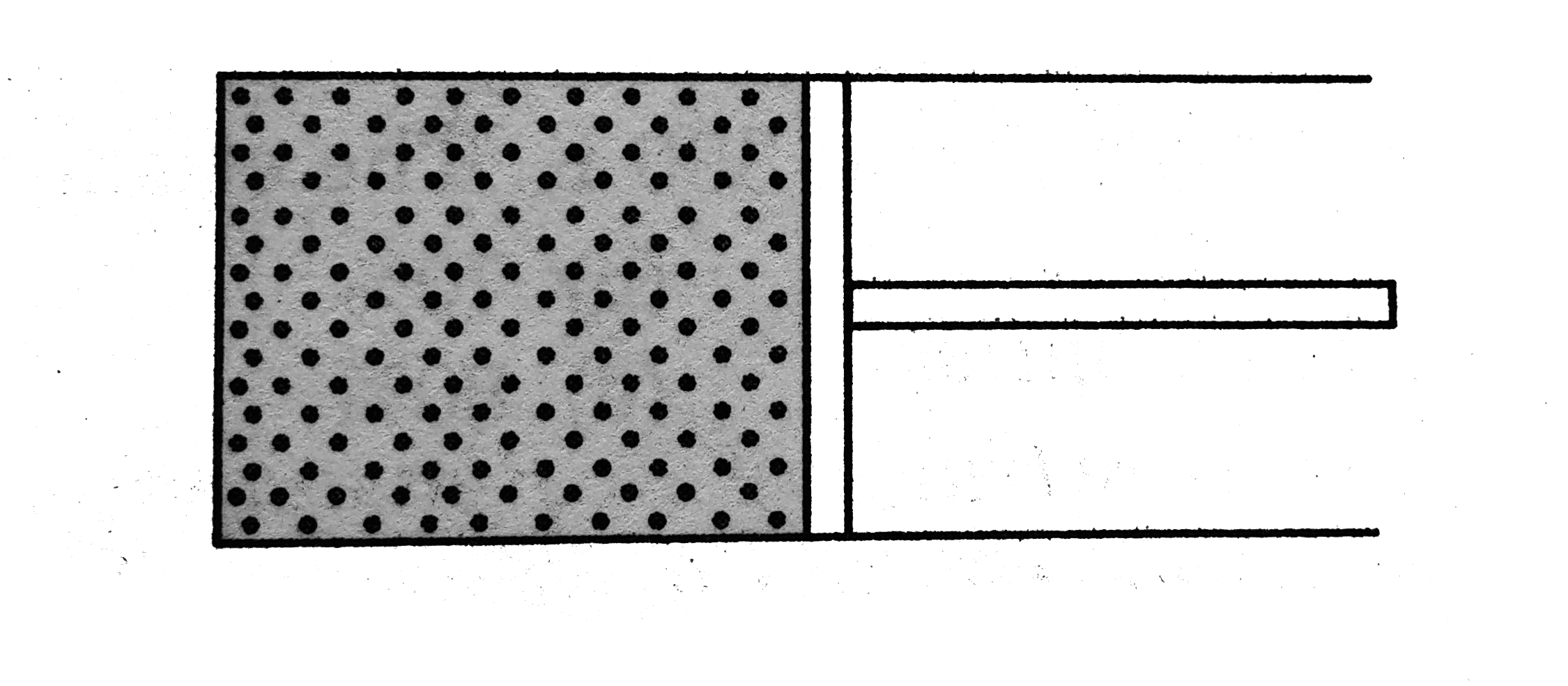In a flexible balloon 2, moles of having an initial volume of 1 kL at a temperature of is filled . The gas is first expanded to thrice its initial volume isobarically and then further expanded adiabatically so as to attain its initial temperature . Assuming the gas to be ideal , the work done by the gas in the whole process is
The correct Answer is:C
To solve the problem step by step, we will analyze the two processes: isobaric and adiabatic expansion of the gas.
Step 1: Initial Conditions
We have:
- Number of moles, n=2 moles
- Initial volume, V1=1kL=1000L
- Initial temperature, T1=27∘C=300K
Step 2: Isobaric Expansion
In the isobaric process, the gas expands to three times its initial volume:
- Final volume after isobaric expansion, V2=3V1=3×1000L=3000L
Using the relationship between volume and temperature in an isobaric process:
V1T1=V2T2
We can find T2:
T2=V2V1×T1=3×300K=900K
Step 3: Work Done in Isobaric Process
The work done by the gas during isobaric expansion is given by:
W1=nR(T2−T1)
Where R=8.31J/(mol K):
W1=2moles×8.31J/(mol K)×(900K−300K)
W1=2×8.31×600=9972J
Step 4: Adiabatic Expansion
In the adiabatic process, we need to find the final temperature T3 after expanding back to the initial temperature T1 while the volume changes from V2 to V3.
Using the relation for adiabatic processes:
T1Vγ−11=T2Vγ−12
Where γ=43:
T3=T1(V1V2)γ−1
Substituting the values:
T3=300(13)43−1=300(13)13≈207.3K
Step 5: Work Done in Adiabatic Process
The work done during the adiabatic process is given by:
W2=nR(T1−T3)γ−1
Substituting the values:
W2=2×8.31×(300−207.3)43−1
Calculating:
W2=2×8.31×92.713=6×8.31×92.7≈4622J
Step 6: Total Work Done
The total work done by the gas in the entire process is:
Wtotal=W1+W2=9972J+4622J=14594J≈14.6kJ
Final Answer
Thus, the total work done by the gas in the whole process is approximately:
15kJ
We have:
- Number of moles, n=2 moles
- Initial volume, V1=1kL=1000L
- Initial temperature, T1=27∘C=300K
In the isobaric process, the gas expands to three times its initial volume:
- Final volume after isobaric expansion, V2=3V1=3×1000L=3000L
V1T1=V2T2
We can find T2:
T2=V2V1×T1=3×300K=900K
The work done by the gas during isobaric expansion is given by:
W1=nR(T2−T1)
Where R=8.31J/(mol K):
W1=2moles×8.31J/(mol K)×(900K−300K)
W1=2×8.31×600=9972J
In the adiabatic process, we need to find the final temperature T3 after expanding back to the initial temperature T1 while the volume changes from V2 to V3.
T1Vγ−11=T2Vγ−12
Where γ=43:
T3=T1(V1V2)γ−1
Substituting the values:
T3=300(13)43−1=300(13)13≈207.3K
The work done during the adiabatic process is given by:
W2=nR(T1−T3)γ−1
Substituting the values:
W2=2×8.31×(300−207.3)43−1
Calculating:
W2=2×8.31×92.713=6×8.31×92.7≈4622J
The total work done by the gas in the entire process is:
Wtotal=W1+W2=9972J+4622J=14594J≈14.6kJ
Thus, the total work done by the gas in the whole process is approximately:
15kJ
Similar Questions
An ideal gas expands adiabatically from an initial temperature T1 to a final temperature T2. Prove that the work done by the gas is CV(T1−T2).
View SolutionAt 27∘C two moles of an ideal monoatomic gas occupy a volume V. The gas expands adiabatically to a volume 2V. Calculate (i) the final temperature of the gas, (ii) change in its internal energy, and (iii) the work done by the gas during this process.
View SolutionAt 27∘C two moles of an ideal monatomic gas occupy a volume V. The gas expands adiabatically to a volume 2V. Calculate
(a) final temperature of the gas
(b) change in its internal energy and
(c) the work done by the gas during the process. [ R=8.31J/mol−K]View Solution4 moles of an ideal monoatomic gas is heated isobarically so that its absolute temperature increases 2 times. Then the entropy increment of the gas in this process is
View SolutionFour moles of an ideal gas at a pressure of 4 atm and at a temperature of 70∘C expands is othermally to four times its initial volume : What is (i) the final temperature and (ii) the final volume ?
View Solution1gH2 gas STP is expanded so that the volume is doubled. Hence, work done is
View Solutionn moles of a gas are filled in a container at temperature T. If the gas is slowly and isothermally compressed to half its initial volume, the work done by the atmosphere on the gas is
 View Solution
View SolutionTwo moles of an ideal gas at temperature T0=300K was cooled isochorically so that the pressure was reduced to half. Then, in an isobaric process, the gas expanded till its temperature got back to the initial value. Find the total amount of heat absorbed by the gas in the processs
View SolutionAn ideal gas at initial temperature 300 K is compressed adiabatically (γ=1.4) to (116)th of its initial volume. The gas is then expanded isobarically to double its volume. Then final temperature of gas round to nearest integer is:
View SolutionAn ideal gas at initial temperature 300 K is compressed adiabatically (γ=1.4) to (116)th of its initial volume. The gas is then expanded isobarically to double its volume. Then final temperature of gas round to nearest integer is:
View Solution

